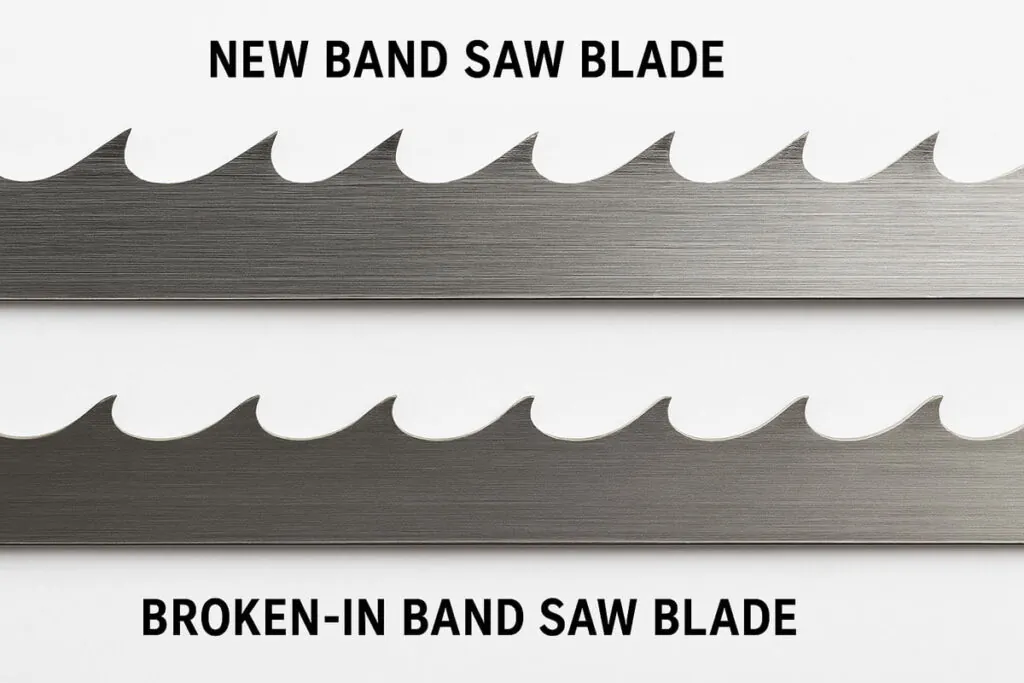Definition of Blade Break-In
Band saw blade break-in is the controlled process of wearing in a new blade’s teeth and edges before full-load cutting. During break-in, you run the saw at recommended speeds and feed rates with reduced pressure, typically cutting mild material. This smooths microscopic tooth edges, reduces chipping, and stabilizes cutting performance. By gradually conditioning the teeth, you help prevent premature wear, tooth breakage, or rough cut surfaces. Proper break-in extends blade life, improves accuracy, and keeps noise and vibration lower. Skipping this step can shorten blade lifespan and increase operating costs.
Why It Matters for Band Saw and Mill Drill Machines
A proper band saw blade break-in directly affects your cutting efficiency. New blades are sharp but fragile at the microscopic level. Without break-in, those delicate edges can chip or dull almost immediately.
When you take time to break in a blade, you reduce stress on the teeth during initial cuts. This improves surface finish, maintains accuracy, and lowers replacement frequency. Over time, this simple practice saves you money and downtime, while ensuring your saw produces consistent results.
Related Terms
Band Saw Blade Tension
Band Saw Tooth Pitch
Band Saw Feed Rate
Band Saw Cutting Speed
Band Saw Coolant Flow
Band Saw Kerf Width
FAQ
What happens if I skip band saw blade break-in?
Skipping band sablade break-in can lead to early tooth chipping, uneven wear, and reduced cutting accuracy. The sharp, unconditioned tips of a new blade are more brittle, so they are likely to crack under normal cutting pressure. This shortens the blade’s usable life and increases replacement costs. In addition, a blade that has not been broken in often produces rougher cuts and generates more vibration, which can stress the band saw machine itself. Over time, this can affect maintenance schedules and production output.
How should you perform a band saw blade break-in for maximum life?
To break in a band saw blade, run it at the normal cutting speed but reduce the feed pressure by about 50% for the first 50–100 square inches of material cut. This lets the teeth wear evenly without chipping. Gradually increase the feed to full rate once the cutting sound and feel become consistent.
Why does a band saw blade break-in prevent tooth chipping?
A new band saw blade has sharp microscopic edges that can be brittle. The break-in process rounds and strengthens these edges under controlled cutting conditions, making them less prone to chipping. This ensures a smoother cut and reduces early blade failures.



